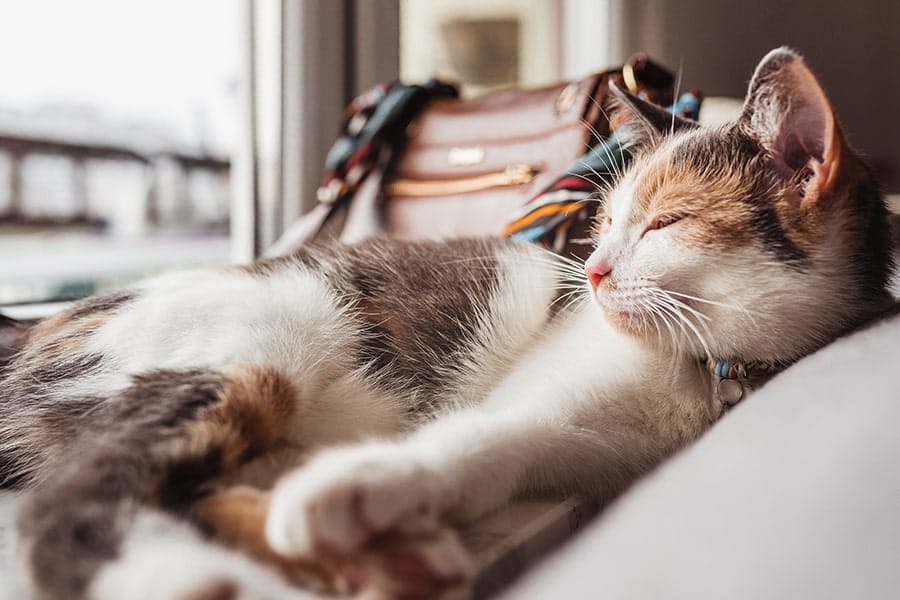The European Shorthair cat originated in Europe and is believed to be descended from local farm cats. They are an original breed rather than a mixed breed. Some of the breeds that likely contributed genetics include the British Shorthair, German Rex, and Persian.
Introduction European Shorthair Cat Breed
The European Shorthair is a relaxed, friendly cat that thrives as a family pet. They have a broad, muscular body and a soft, plush coat. Come in a wide variety of colors and patterns including solid, tabby, bicolor and tortoiseshell. While not overly vocal, they enjoy chatting with their owners. These cats tend to be low maintenance and adapt well to apartment living.

Affectionate with Family: ⭐⭐⭐⭐
Amount of Shedding: ⭐⭐⭐
General Health: ⭐⭐⭐⭐
Potential for Playfulness: ⭐⭐⭐
Tendency to Vocalize: ⭐⭐
Kid-Friendly: ⭐⭐⭐⭐⭐
Friendly Toward Strangers: ⭐⭐⭐
Easy to Groom: ⭐⭐⭐⭐
Intelligence: ⭐⭐⭐
Pet Friendly: ⭐⭐⭐
- Appearance: Sturdy, muscular body; broad chest; short legs. Medium to large in size. Round eyes; small, rounded ears. Plush, dense coat.
- Characteristics: Calm, friendly personality. Intelligent and adaptable. Gentle, not overly energetic. Low grooming needs.
- Popularity: Gaining popularity as family pets but still fairly uncommon outside Europe.
- Temperament: Easygoing, affectionate cats that thrive in relaxed households. Generally quiet pets.
- Lifespan: 12-15 years
- Coat Color: Many possible colors/patterns including solid, tabby, bicolor and tortoiseshell.
- Breed History: Original breed developed from European farm cats. Not mixed breed. Related to British Shorthair, German Rex.
How to Care for a European Shorthair Cat Breed
Food:
- High-quality dry food appropriate for the cat’s age. European Shorthairs prone to obesity so don’t overfeed.
- Occasional wet food for extra hydration and protein. Canned fish like tuna or sardines make a tasty treat.
- Avoid fish-only diets as excessive fish can lead to mercury poisoning.
Environment:
- Comfortable in apartments but need access to playtime and exercise daily.
- Cat trees and perches let them climb and survey their territory from above.
- Litter boxes, scratching posts, toys to keep them active and mentally stimulated.
Grooming:
- Brush coat 1-2 times per week to control shedding and distribute skin oils.
- Trim nails every 2-3 weeks to prevent overgrowth and splitting. Check ears.
- Most are moderate shedders. Frequent brushing helps manage loose hair.
- Give dental treats or brush teeth weekly to maintain healthy gums and teeth.

Take Care Method: European Shorthairs thrive when provided with affection and playtime daily. Set aside time each day for cuddles, play with interactive toys like feather wands, and training tricks through positive reinforcement. This meets their intellectual and bonding needs.
How to Adopt/Buy a European Shorthair
- Locations of Popularity: Most common in northern and western Europe including Germany, Scandinavia and the UK. Less prevalent elsewhere.
- Average Price: $400 to $600 USD. Purebred cats from breeders are more expensive.
- Adoption/Rescue: Purebred rescue organizations like Birman Rescue and Siamese Rescue. Check local shelters and petfinder.com as well.
What to Check Before Adopting/Buying:
- General Health: Healthy weight, clear eyes/nose, clean ears, parasite-free. Energetic and lively.
- Vaccine Status: Up to date on all age-appropriate vaccines. Kittens need boosters.
- Medical History: Review vet records for prior illness, surgeries, genetic conditions. Reputable breeders screen for health issues.
Preparing for a European Shorthair Cat
Here are a few tips to prepare for bringing home your new European Shorthair cat:
- Cat-proof your home by removing hazardous items and securing screens. Stock up on supplies like litter, food bowls, cat bed.
- Make an appointment with a veterinarian for an initial wellness exam and to establish care.
- Buy interactive cat toys to provide exercise and mental stimulation. Set up scratching posts.
- Feed high-quality food on a schedule and provide clean, fresh water daily.
- Brush your cat regularly when young so they become accustomed to grooming. Check ears/eyes weekly.

Common Diseases: Hypertrophic cardiomyopathy, polycystic kidney disease, joint issues. Regular vet visits allow early detection.
Recommended Vaccines: FVRCP, FeLV, rabies and any other vaccines recommended by your vet.
Popular Names
When naming your European Shorthair, opt for friendly, playful names that suit their endearing personality. Some common choices include:
Max, Oscar, Oliver, Leo, Charlie, Milo, Ollie, Simba, Felix, Sam, Luna, Lily, Daisy, Chloe, Zoe
Do European Shorthair cats like going outside rather than staying home?
Can be content as indoor-only cats but also enjoy exploring the outdoors under supervision. Make sure they are microchipped and wearing a collar for safety.
Is a European Shorthair cat a smart cat?
Yes, cats are intelligent cats that can be trained to walk on a leash, play fetch, and learn tricks. Puzzle toys help keep their busy brains entertained.
How many types of European Shorthair cats are there?
Just one breed. However, they come in many coat colors/patterns including tabby, tortoiseshell, bicolor, solid, and more.
How to stop a European Shorthair cat from biting?
Redirect biting onto appropriate toys. Say “no” firmly and ignore them briefly after biting. Consistency and time will teach kittens that biting is unacceptable.
How to stop a European Shorthair cat from scratching?
Provide plenty of scratching posts around your home. Praise them when they use scratching posts. Use cat-safe deterrent sprays on off-limit areas. Trim their nails regularly.
How to socialize and raise a friendly European Shorthair cat?
Socialize kittens young through positive experiences with people, other pets, car rides and handling. Offer praise and treats for good behavior around strangers.
How to train your European Shorthair cat?
Use rewards like treats or play to reinforce desired behaviors. Clicker training works well too. Focus on basics like coming when called, not scratching furniture, and tolerating handling/grooming.
How often should a European Shorthair cat see the vet?
Annual exams are recommended, with semi-annual senior wellness checks over age 7. Sick visits any time something seems wrong. Dental cleanings help prevent gum disease.
Are European Shorthair cats good family pets?
Yes, tend to excel as family companions. They are patient, gentle and affectionate with children and other pets when properly socialized.
Are European Shorthair cats good with children?
European Shorthairs are very kid-friendly cats. Supervise young children and teach them how to gently pet the cat. Older children can help care for the cat with tasks like feeding and playtime.
Are European Shorthair cats good with other animals?
European Shorthairs generally coexist well with other pets when raised together. Proper introductions are key. They may be less tolerant of rowdy dogs or pets that chase them.
Can European Shorthair cats cause allergies?
European Shorthairs do produce allergens in their saliva and dander like all cats. They may be slightly less allergenic than some breeds but not hypoallergenic.
Are European Shorthair cats ferocious?
No, European Shorthairs have a very friendly, mellow temperament and are not prone to aggressiveness.
Do European Shorthair cats have a lot of hair loss problems?
No, European Shorthairs are not prone to excessive shedding or hair loss. Their plush coat remains intact with weekly brushing and proper nutrition. Some seasonal shedding is normal.
Are you a cat lover who wants to learn more about your furry friends? Do you want to find the best cat food, cat care tips, and resources for your cats? If so, you’ve come to the right place! Welcome to Cat Food Site, the ultimate website for cat enthusiast.
Here you will find everything you need to know about cats Breed, from their health and behavior to their breeds, cat diet and names. You will also discover the latest cat news, cat nutrition, trends, and memes from around the web.

